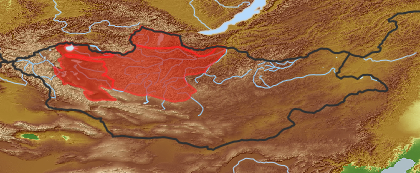| Class: | angiosperms |
| Order: | Nymphaeales |
| Family: | Nymphaeaceae |
| Editor | S. Rilke, July 2009 |
| Name acc. to: | APGII |
| Herbar: | list records  |
| open map in a new window |  |
| genus: 2 |
| species: 3 |
| Habit (i)general appearance of a plant | |
| Parasite status: (i)Is the plant a half- or full parasite? | no parasite/saprophyte (i)Plant fully autonomous, leaves with chlorophyll
example: Most plants, Ranunculus
|
| Water or terrestrial plant: (i)Where do the plants grow? | aquatic, leaves floating (i)Plant submerged in water, but leaves and flowers above surface
example: Nuphar  inherited by order Nymphaeales: aquatic, leaves floating inherited by order Nymphaeales: aquatic, leaves floating
water or swamp plant  inherited by order Nymphaeales: water or swamp plant inherited by order Nymphaeales: water or swamp plant
|
| Leaf (i)expanded, usually photosynthetic organ of a plant (including phylloclades) | |
| Leaf veination: (i)Arrangement of the main veins of a leaf. | pinnate (i)One main vein, several side veins, sometimes inconspicuous
example: Cicerbita   
|
| Flower (i)reproductive portion of the plant, consisting of sepals, petals, stamens, and pistils | |
| Spur: (i)A hollow, slender, sac-like appendage of the perianth leaves, storing nectar. | no spur (i)Flower without appendage
example: Peganum
|
| Stamen number: (i)Attention: We ask for the reproductive organs of the flower dispersing pollen. Count only fully fertile stamens, not staminodia (e.g. Parnassia). | > 10 (i)
example: Nymphaea, Callianthemum, Rosa
|
| Root / shoot below ground (i)plant part below ground (in most cases), including below ground shoots, without leaves | |
| Root type: (i)Organisation of the roots. | allorhizous (i)Plant with a conspicuous tap root, one larger tap root with side roots
example: Dicotyledonae  inherited by order Nymphaeales: allorhizous inherited by order Nymphaeales: allorhizous
|